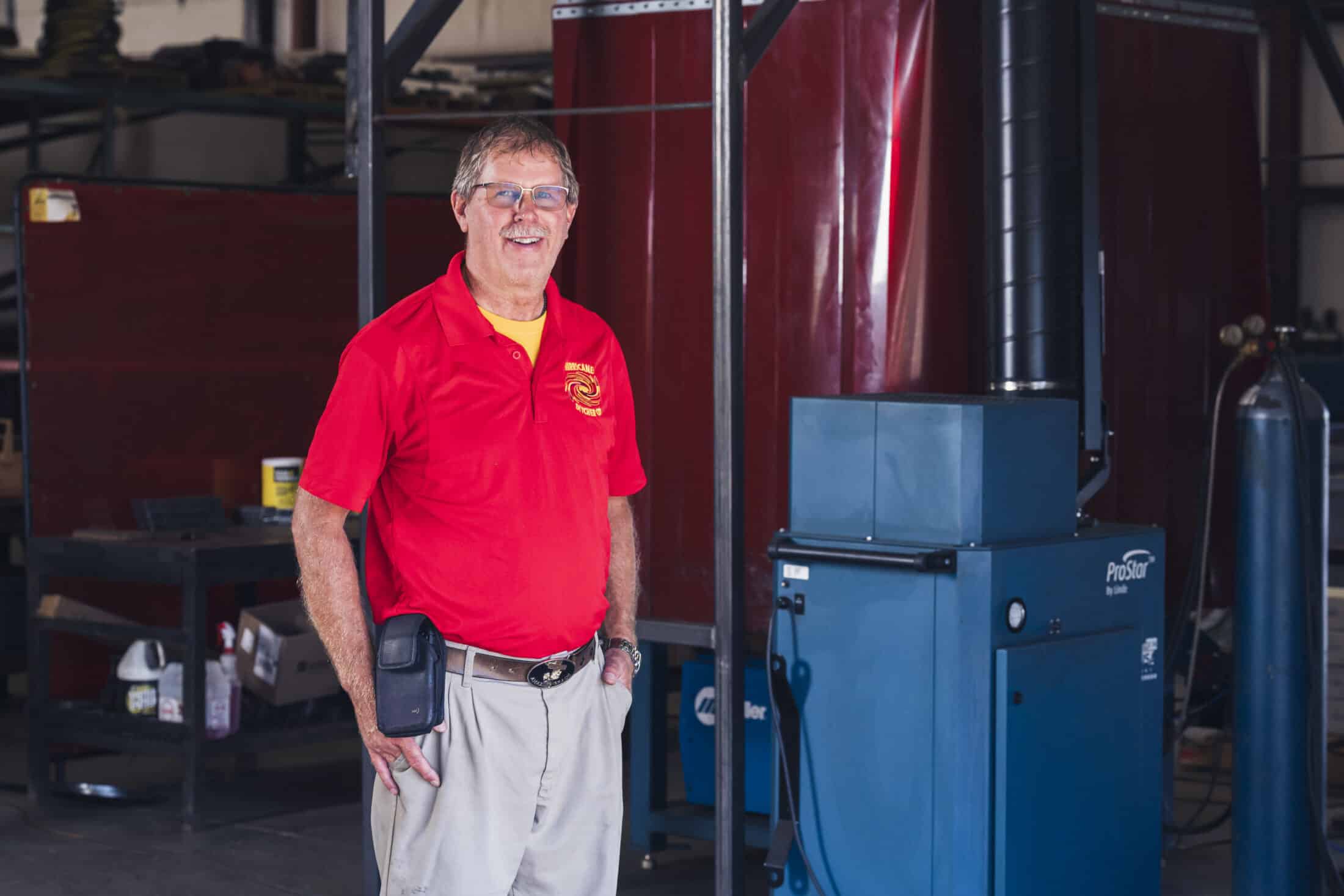A $175,000 Manufacturing Readiness Grant (MRG) streamlined Hurricane Ditcher’s production capabilities and improved product aesthetics with an advanced plasma cutting table and welding cobot.
Hurricane Ditcher Co.
Case Study
Key Stats
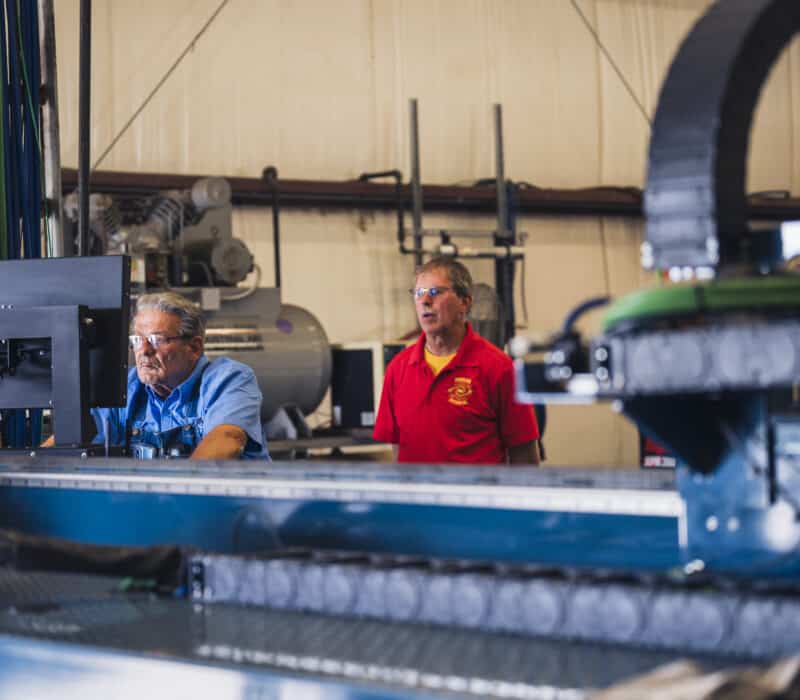
Company History
Founded in 1984, Hurricane Ditcher (“Hurricane”) grew from a small equipment manufacturer into a company providing precision equipment for farmers, contractors, custom drainage operators, and county, municipality and state highway departments across 31 states and 10 countries.
Paul M. Snyder was a Southern Indiana farmer facing the same field drainage and terracing issues of many Midwestern farmers. His response was the development of what became known as the Model 16 Ditcher helping users control water and erosion—the first such machine ever built for that purpose. Today, under the leadership of Paul’s son John as President and Owner, the company produces 12 different equipment models, each designed to strategically move dirt to manage water in specific situations. All of them can be pulled by a tractor and connect to the tractor’s power take-off (PTO) for operation. In 2020, Hurricane acquired Maddock Construction Company and expanded its product line to include asphalt recyclers, backhoe mills, berm cutters, ditchers, excavator mills and roto-graders for municipalities and contractors.
Headquartered in Vincennes, Indiana, Hurricane also has a manufacturing facility in nearby Carlisle, Indiana occupying a total of 22,000 square feet. More than 200 authorized dealers and distributors represent the company in the U.S. and Canada, with one in South America. By 2024, the Hurricane workforce had grown to 21 employees.
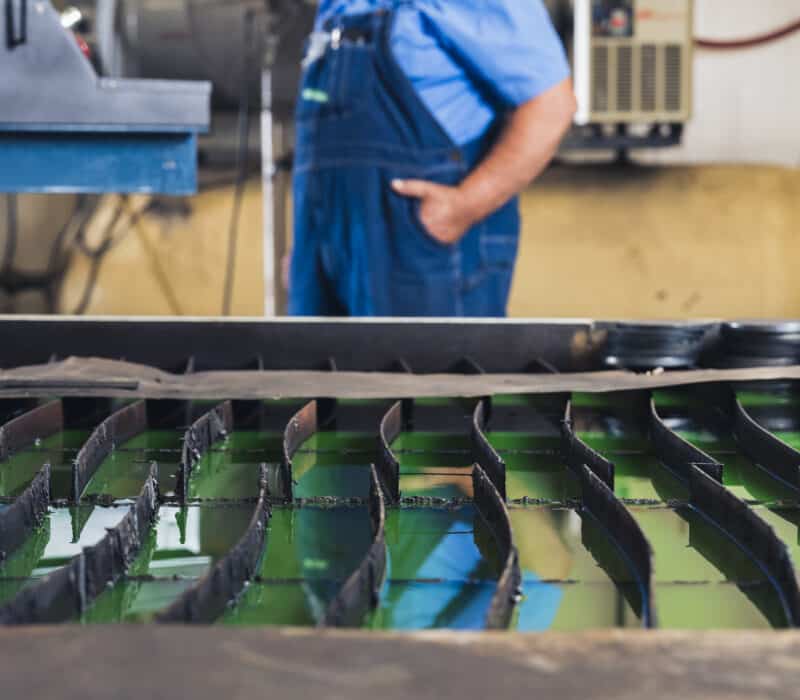
The Project
Hurricane had discovered the MRG Program and was working on an application when an unexpected equipment failure accelerated the company’s smart technology adoption.
Hurricane Ditcher’s project centered around a multi-axis plasma cutting table and integrated cobot for welding procedures. The company’s prior plasma table was the third Hurricane had owned and needed frequent repairs due to its service life. An investment for a new, more advanced system was under consideration and, in the meantime, Hurricane continued the inconvenience and expense of frequent repairs.
Many of Hurricane Ditcher’s products use a rotating impeller with multiple blade-like paddles to effectively move dirt and create surface drainage ditches. Prior to the MRG project, paddle production involved cutting a part and placing it in a tub to be hauled to another building. There, a machining pattern was applied and the part would be moved to different, specialized machines for each hole punching, drilling and bending process. One of the final steps for certain parts is “hard surfacing,” a welding process that builds a sacrificial layer of weld material on parts exposed to extreme wear and tear to prolong their lifespan. Hurricane Ditcher hard faces their impeller wheels and paddles which can extend their working lifespan from less than an hour to over sixteen hours. “There was a lot of movement going on to manufacture each of these components,” Owner John Snyder said. “At that time, we used an A36-steel plate to make these parts. Customers found a lot of rough edges, and most had to handle our finished product with gloves.”
Hurricane Ditcher took advantage of an emergency equipment situation to not just recapitalize their manufacturing tools, but take a leap into cobot-assisted manufacturing.
John had learned about the Manufacturing Readiness Grants program and begun the process of researching how the company might use a grant to increase its technology and significantly improve their product and customer satisfaction. During the planning process, their existing plasma table broke beyond repair and necessitated immediate replacement to meet production demands. With that purchase on a 7-week delivery schedule, John scrambled to outsource the work that had previously been accomplished by the existing table. Just three weeks into the delivery timetable, Hurricane was notified that its grant application had been approved. “If the initial table hadn’t failed, I don’t know that we would have bought the one we had ordered,” John acknowledged. “But we decided to take that leap and use the grant to help us purchase a more advanced table and the partner cobot.”
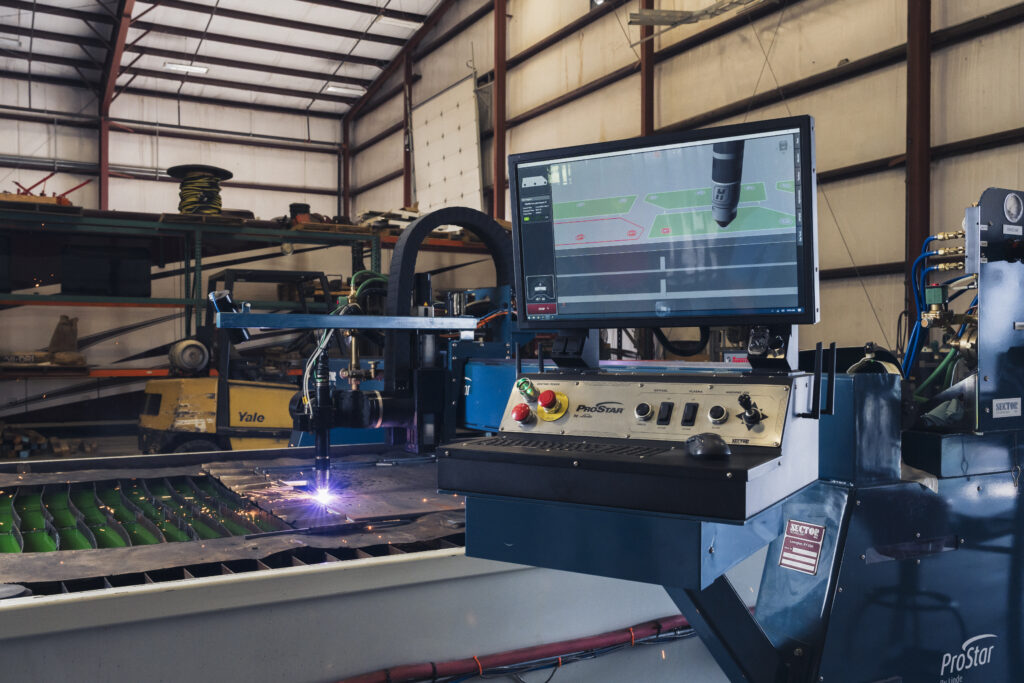
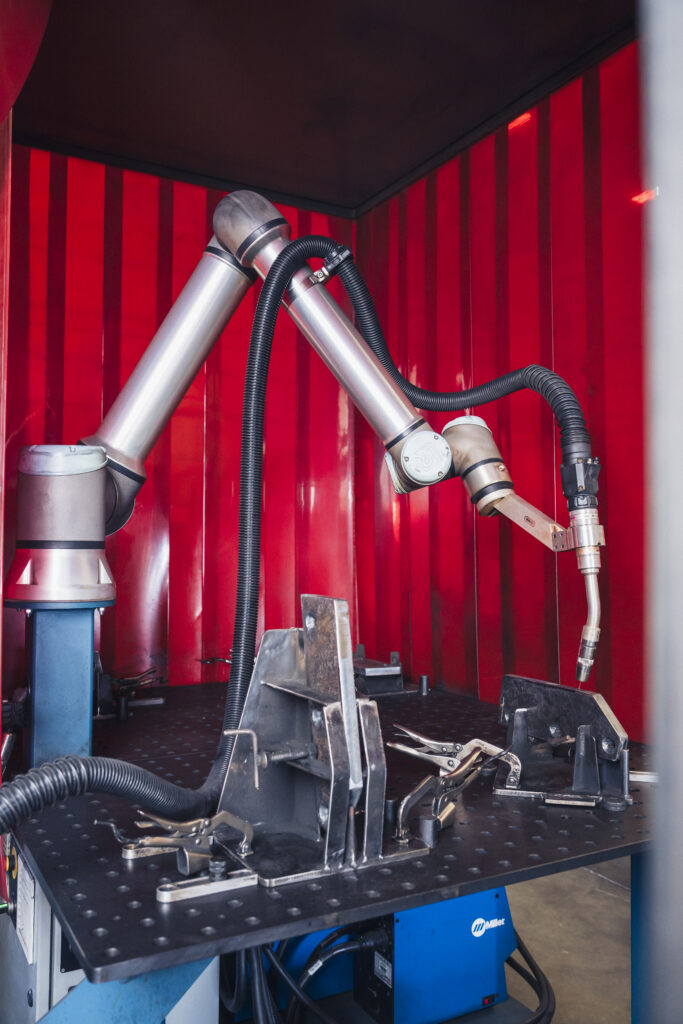
The new system drastically reduced part transit times through production runs. This new plasma table allows holes to be automatically beveled, rather than countersunk by a separate machine. In total, the table-cobot tandem does the work of four previously discrete machining steps all in one location with a smaller footprint. The once tedious and meticulous process of manually hard surfacing components is now completed by the cobot with improved consistency and accuracy.
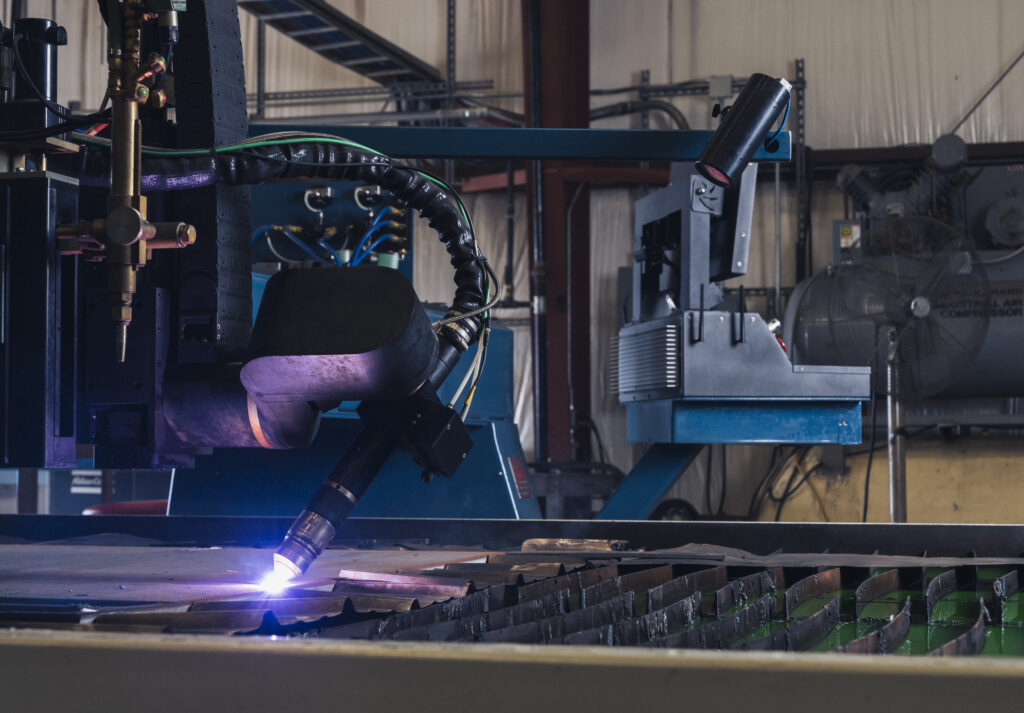
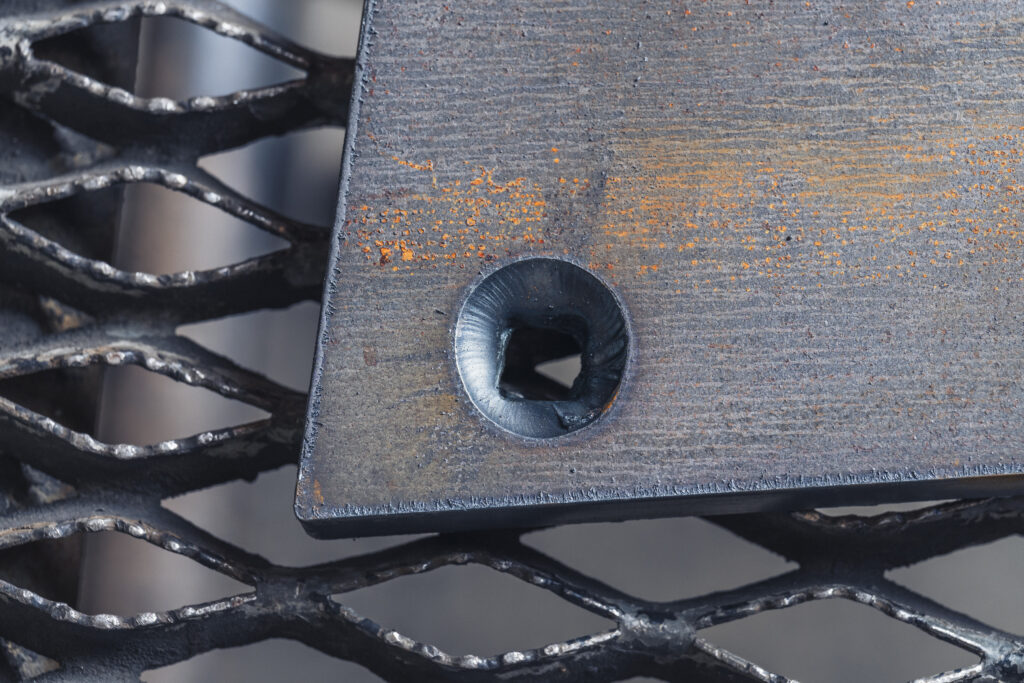
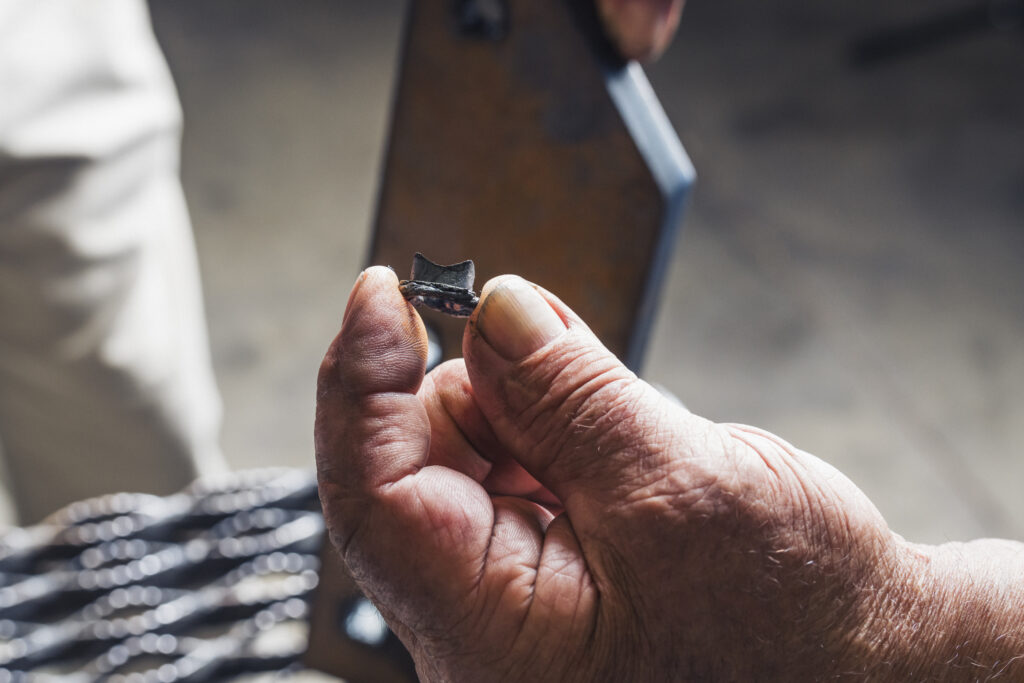
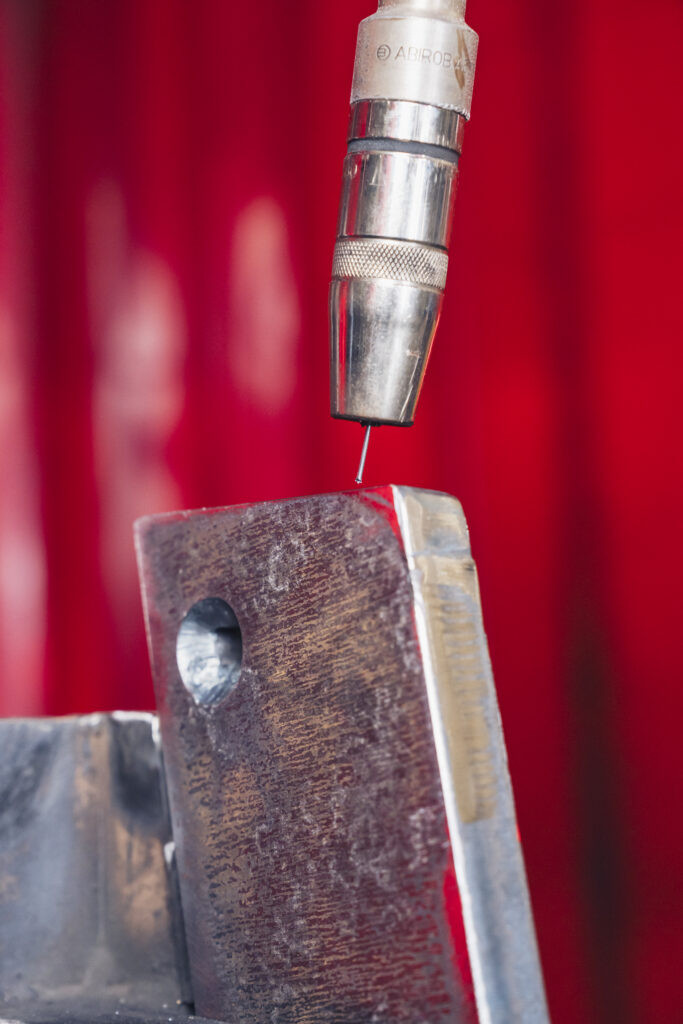
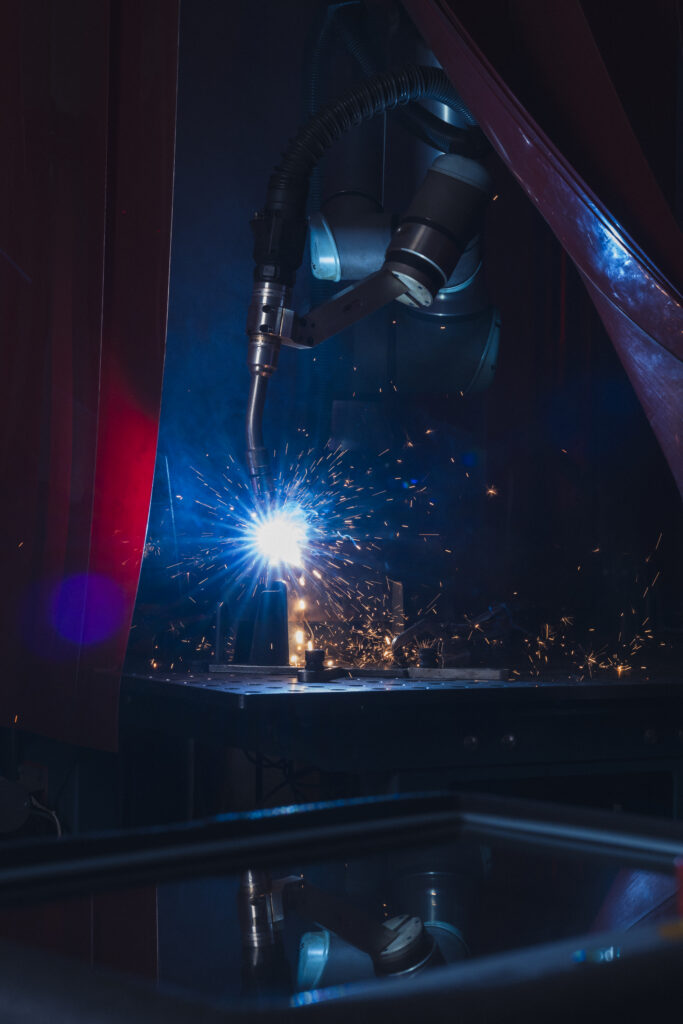
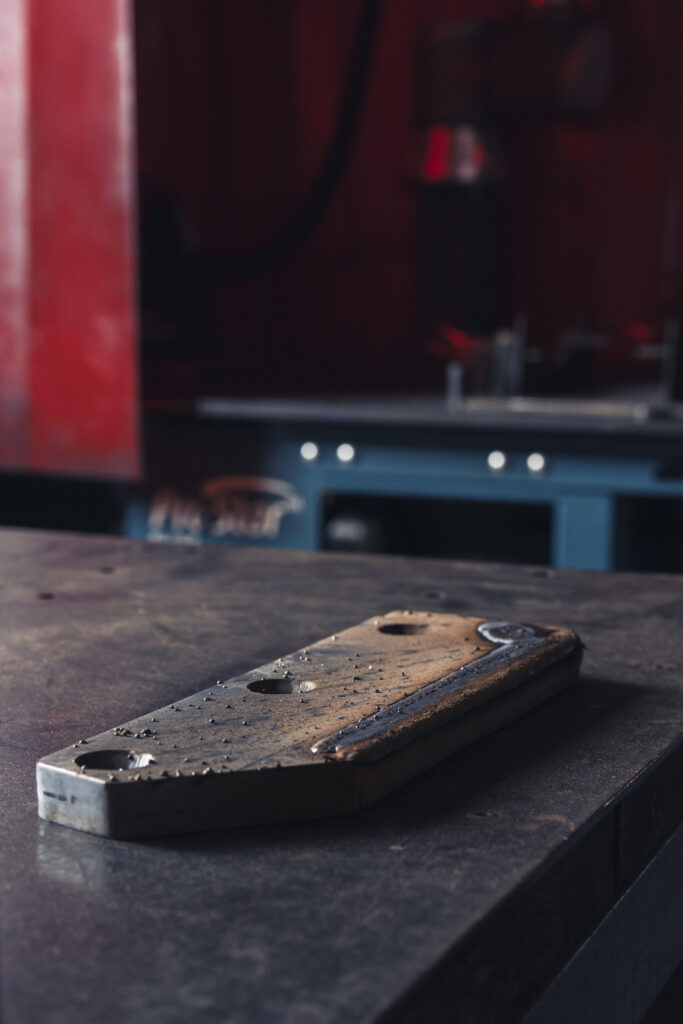
Because this table is able to work with carbon steel for consumable parts, instead of the previously used A36-steel plate, the running time of Hurricane Ditcher consumables has increased from 16 to 28 hours. “Not only did we get better-looking components, but we also cut our manufacturing time for some pieces from 14 minutes down to under four minutes,” John said. Installed and in production, the cobot and table package is currently operating at about a third of its capacity. The company is actively designing different jigs, fixtures and other ways to fully realize the production capabilities and capacities available to them.
Manufacturing Readiness Grants (MRG) provided by the Indiana Economic Development Corporation and administered by Conexus Indiana are available to Indiana manufacturers willing to make capital investments to integrate smart technologies and processes that improve capacity. Hurricane Ditcher’s application for an MRG was approved for $175,000, enabling the addition of a cobot to its new advanced plasma cutting table project.
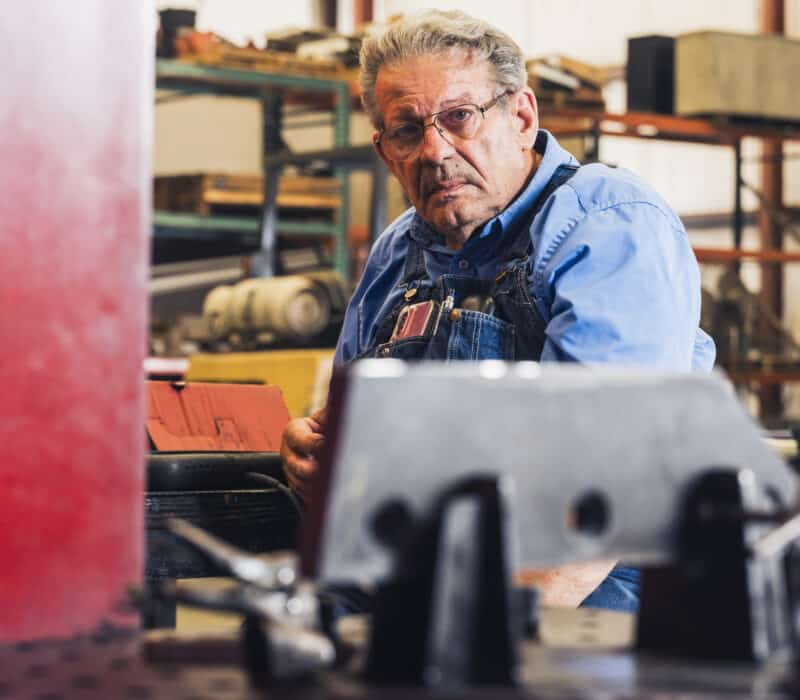
Workforce Implications and Integration
For years, John had been adamant: there would never be a robot on the floor at Hurricane Ditcher.
“Cobots are expensive,” he echoed. “They’re for automotive. They’re for John Deere and Case and tractor factories.” But a cobot’s lower financial barrier to entry and relatively simple training process began to open his eyes to their compatibility with a more specialized manufacturing environment like Hurricane. “When skills and experience are scarce… when training someone to work alongside the cobot to make sure it doesn’t malfunction, to know what buttons to push – this can eliminate the need for employees who are in a rapidly disappearing specialty like welding. Existing workers can train to collaborate with that robot, essentially doing a job that fewer and fewer people can do.”
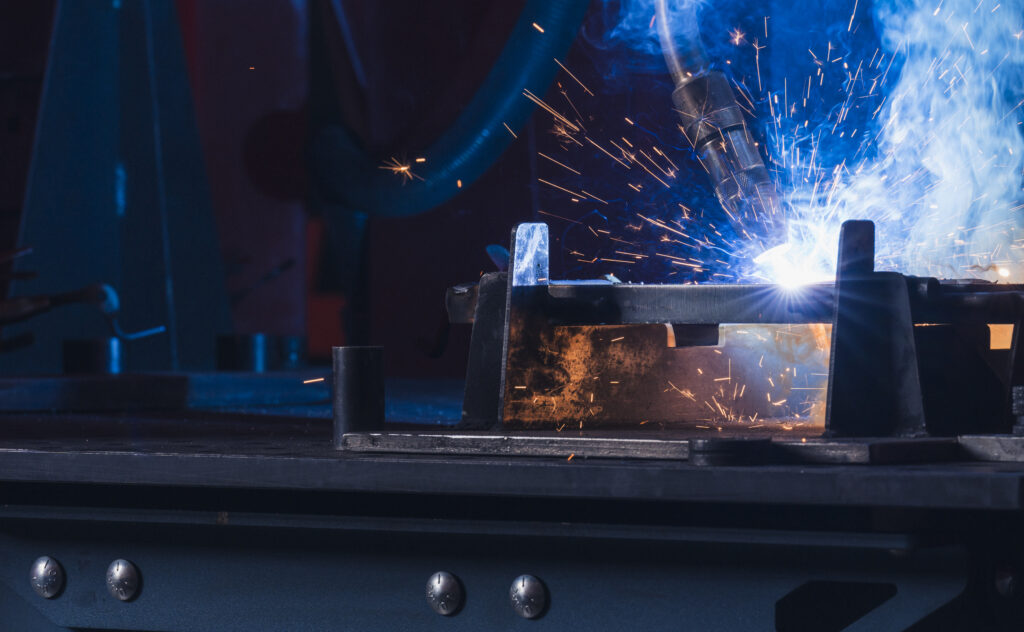
The vendor selection was an essential part of this project’s equation. The new plasma table and integrated cobot package was sourced from one vendor—Linde Corporation—selected in part because its representative had extensive experience as a certified welder and was well-versed in Hurricane’s production needs. “He knew exactly what our concerns were,” John said, “and helped us understand that the cobot was the welder, so we didn’t need to find a welder in the employee marketplace.”
The vendor provided equipment training on the factory floor, and the technical help provided by Linde’s representative was continued by the installation team who worked together with Hurricane employees. “The installation was a good experience,” John said. “There were stages during the setup that incorporated training. The staff were shown potential situations with an explanation of how to handle them: ‘Now if this happened, or that happened, here’s where you need to be to adjust or fix or calculate.’ They provided training after the installation when we were ready to run the machine, as well. There was just no way we could have done it without their technology and the training they provided.”
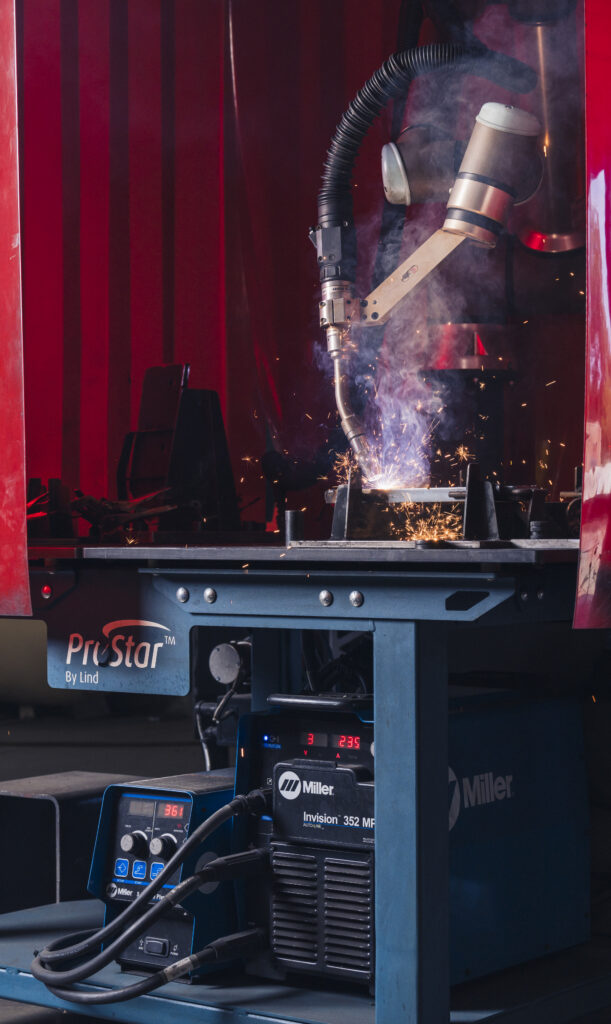
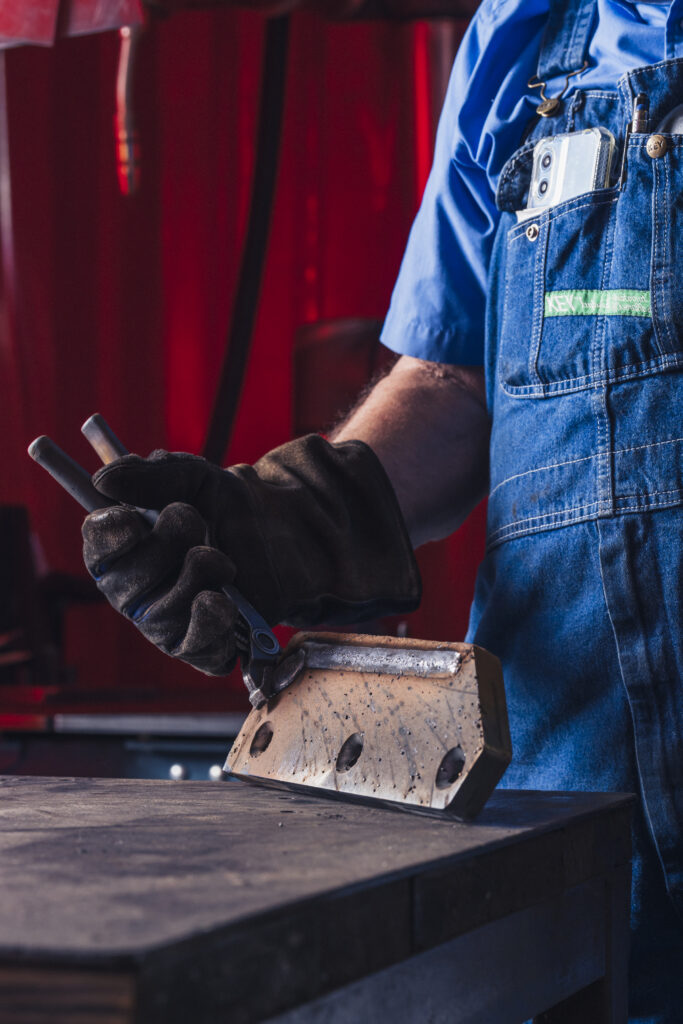
Hurricane’s employees didn’t seem to be frightened by media stories about technology replacing workers and quickly came to understand the benefits of the plasma table and cobot tandem given current staffing challenges. “There was no resistance at all,” John recalled. “There were a couple of comments: ‘What are you going to do with that thing?’ ‘What good is it?’ But it wasn’t resistance or derogatory. Every employee we have knows that the workforce is not what we need. Everyone’s overloaded, and we just can’t get enough staff. There are 6-, 8-, 10-week training programs for welders, but they don’t have the knowledge to do what we do.”
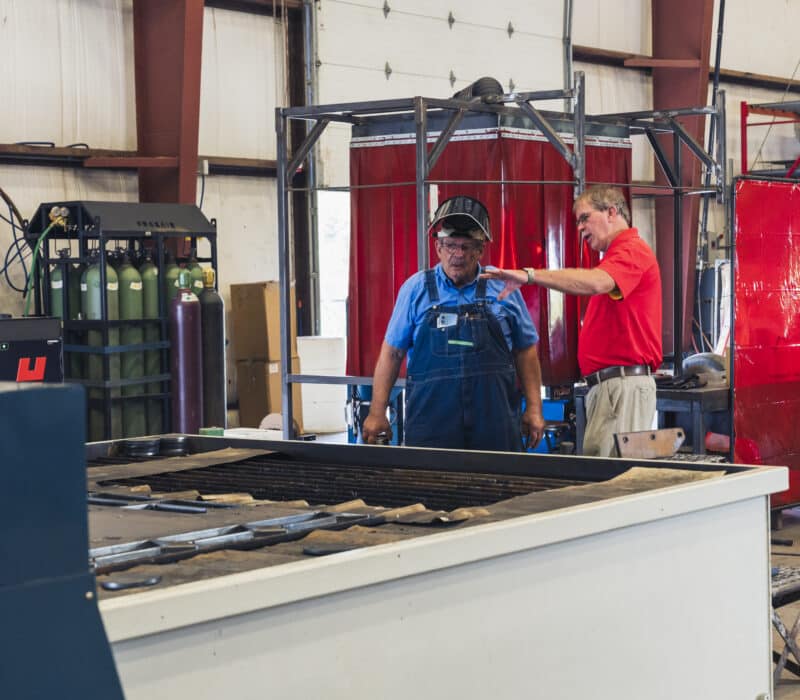
Shared Learnings
From application through installation, the Manufacturing Readiness Grants procedure was personal and professional.
Hurricane’s Office Manager Nancy McKinley was closely involved in preparing the application and was impressed with the assistance she received from the Conexus Indiana individual who worked closely with her through the application development. “We had never applied for a grant before,” she said. “We had a lot of help getting the application completed. I was always made to feel there was no such thing as a dumb question; whatever I needed, they were always helpful.”
“We’re grateful that we were able to get that grant,” John said. “We’ve improved our products—we’ve improved our customers’ reaction to the product. The cobot has eliminated the rough edges and sharp points on some products, and improved the overall look of the paddles that were shipped out. That’s not only on the machines themselves but, because they’re reordered all the time, the consumable parts, too.” The MRG experience was a welcome one – increasing efficiencies and presentation of their final product. “We’ve built our business on quality, and we’ve always had that. This gave us a bit of a boost in that perception.”
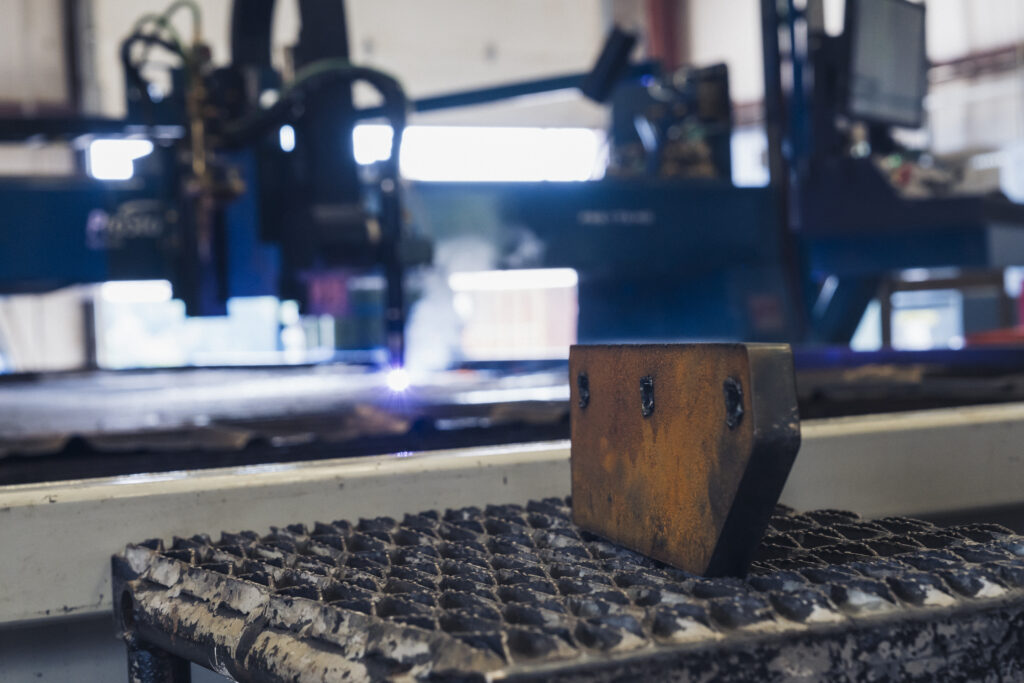
“We’re not the machine shop or farm shop we started as 40 years ago. This is a full-fledged company that’s making several hundred units a year, and we’re in it for the long haul.”
John Snyder
Owner at Hurricane Ditcher Co.
